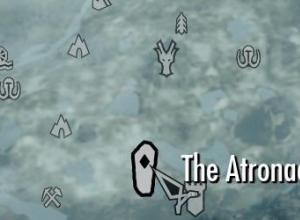Amniotic cord consequences. Amniotic bands
Amniotic band syndrome is a complex of congenital developmental anomalies ranging from small constrictive ring constrictions and lymphatic edema of the fingers of the extremities to combined, bizarre multiple malformations caused by amniotic cords that grow together with various parts of the fetal body, enveloping and destroying them.
Synonyms: ADAM complex (amniotic deformities, adhesion, and multilation - amniotic deformities, adhesions and defects), sequence of amniotic cords, complex of amniotic disruptions, annular grooves, congenital amputations, congenital constriction cords, Streeter cords, transverse terminal limb defects, strands of aberrant tissue, amniochorial mesoblastic connective tissue cords and amniotic constrictions.
Disease prevalence rate is 7.7 per 10,000 births, but can reach 178 per 10,000 if spontaneous miscarriages are taken into account (with a 1:1 sex ratio).
Exactly unknown. Teratogenic, genetic and multifactorial theories have been proposed that determine the occurrence of rupture of membranes. The teratogenic effects of drugs such as methadone or lysergic acid diethylamide (LSD) may play an important role in many cases.
Rupture of membranes in the early stages of pregnancy, it leads to the “envelopment” of fetal structures by “sticky” mesenchymal strands emanating from the chorionic part of the amnion, which causes the formation of destructive defects in it.
Syndrome leads to structural abnormalities ranging from minor manifestations to lethal forms. The most common signs are: constriction rings around the arms, legs and fingers; swelling of the limbs located distal to the level of the constriction; amputation of fingers and limbs; facial asymmetry; facial clefts; cephalocele; anencephaly; multiple joint contractures; formation of pterygomum; clubfoot; club-handedness; pseudosyndactyly; microphthalmia; coloboma of the choroid of the eyeball; corneal metaplasia and unilateral lacunar chorioretinopathy.
Differentiate the syndrome amniotic cords follow amniotic folds that are not connected to the fetal body, as well as such a defect as an anomaly in the development of the body stem.
The most severe forms diseases lethal. Mild manifestations of the disease, which are sometimes detected at birth, do not affect survival.
No relapse expected, with the exception of rare sporadic familial cases reported in association with epidermolysis bullosa and Ehler-Danlos syndrome.
Depends on the degree severity anomalies. For severe forms, termination of pregnancy may be suggested. There is a report of intrauterine endoscopic intervention, which led to a favorable outcome.
While carrying a child and before conception, you need to think about the fact that all diseases, bad habits and other negative factors will adversely affect the course of pregnancy and the development of the fetus. One of the deviations is an amniotic cord in the uterine cavity during pregnancy. In some cases, such formation leads to abnormal development of the fetus or even its death.
Collapse
What is it?
The amniotic cord refers to special threads that consist of connective tissue and are located between the uterine walls, in the amniotic sac. The outcome of such a pregnancy is different. From its normal course to spontaneous abortion, the appearance of defects or death of the fetus in utero. Pathology can be detected only after the third month of pregnancy, at the beginning of the second trimester.
Reasons
It is still impossible to say unequivocally what influences the occurrence of pathology. But, there are factors that can provoke the appearance of a septum in the uterus.
- Many scientists argue that the amniotic cord occurs as a result of minor damage to the amnion, between the 4th and 19th weeks of pregnancy. The threads that remain after the shell is broken are separated and found inside. At the same time, they can bandage the umbilical cord, arms or legs of the fetus. Throughout the entire period of gestation, the threads are motionless and inextensible, despite this, the fetus grows, which can cause various negative consequences.
- Other researchers are more inclined to believe that such formations appear due to vascular disorders, which entails the appearance of numerous anomalies.
- Another version is the influence of intrauterine infection.
In addition to the above factors, we can highlight the presence of:
- oligohydramnios;
- endometritis;
- abnormalities in the development of the genital organs of a pregnant woman;
- isthmic-cervical insufficiency.
Most medications and invasive diagnostics during pregnancy also have a negative effect on the body. This deviation is not inherited. It may appear during the second pregnancy, even if there was no pathology during the first.
Diagnostics
Strands in the amnion can be detected using ultrasound at the beginning of the second trimester, but not always. The threads may be so thin that they cannot be recognized on the screen. If in the future the baby has deformed parts of the body, then this diagnosis is made.

If additional diagnostic measures are required, 3 D ultrasound diagnostics, MRI, and fetal echocardiography are performed. This is necessary to prevent serious consequences for the baby.
In 75% of cases, the septum resolves on its own and does not cause harm. If they were visible at the first ultrasound, but not at the second, then we can talk about a favorable outcome. Of course, if the fetus has no visible defects.
Consequences for pregnancy
If ultrasound diagnostics showed the presence of an amniotic cord in the amniotic sac, then the pregnant woman will need to be regularly monitored by a specialist. Mostly, pregnancy ends positively, but there are exceptions.
If there were no negative consequences at the end of the second trimester, then everything should go well in the future.
Sometimes the septum affects the baby, entangling its various parts of the body (legs, arms, neck, intertwining the umbilical cord, etc.). In some cases, pregnancy is terminated early. Sometimes it needs to be interrupted at the end of the second, beginning of the third trimester due to the fact that the fetus has multiple defects that are incompatible with life or, conversely, to save its life.
Treatment
Pathology is treated only after its long-term presence. The woman constantly goes for examinations for control. If the septum compresses a vital organ for the baby, then radical treatment is prescribed. Modern medicine is improving and it is now possible to cut amniotic cords in utero. In some cases, a caesarean section is performed.
After the birth of a baby who has intrauterine anomalies that appeared due to the above-mentioned partitions, appropriate measures are taken.
- If the child has severe indentations of the arms or legs and this interferes with normal blood circulation, the scar tissue is excised. The operation must be done within the first 12 months.
- If there are fused fingers, they are separated.
- If clubfoot or strabismus is detected, appropriate therapy is prescribed.
- If a limb was amputated in utero, a special prosthesis can be made.
- Cleft palate and cleft lip are eliminated through surgical interventions. Keep in mind that one operation will not help, you may need from 2 to 6. The latter must be carried out before the child turns six years old.
Consequences and complications
The amniotic cord contributes to:
- impaired blood flow in the fetus;
- swelling of a certain area;
- the appearance of necrosis (a certain part dies), in the future it will have to be amputated;
- compression of the phalanges of the fingers or the entire limb;
- the occurrence of hemangiomas (benign vascular tumors that rapidly increase in size);
- the appearance of damage to the skull or facial area;
- development of strabismus;
- the appearance of congenital amputations;
- the formation of a “cleft palate” or “cleft lip”;
- premature birth.

If the second ultrasound shows the presence of an amniotic septum, which threatens the health or life of the baby, the doctor decides what to do next.
Prevention
Due to the fact that there is no specific cause of the pathology, there are no clear preventive measures. But, in order to protect yourself and your unborn child, you need to:
- adhere to a healthy lifestyle;
- do not use any medications without a doctor’s permission;
- refuse casual sex;
- eat properly and nutritiously;
- undergo examination before planning pregnancy;
- Regularly visit a gynecologist and do all planned diagnostic measures.
Conclusion
Amniotic cords often resolve on their own and do not require surgery. If necessary, intrauterine dissection is performed or the pregnancy is terminated at any stage. In rare cases, such partitions cause significant harm to the baby, disfiguring his body.
Amniotic bands are detected in some women on ultrasound starting at 12 weeks of pregnancy. The pathology itself is not dangerous if the amniotic band does not come into contact with the fetus. It occurs in case of damage and a slight rupture of the membrane of the fertilized egg in the early stages of up to 6 weeks.
At the healing site, threads of connective tissue are formed, which at first do not affect the embryo in any way. But they, unlike fetal tissues, do not stretch and do not adapt to the growing organism.
Covering the soft tissues of the fetus, as it grows, constrictions compress a part of the body and damage it, leading to external deformities. Thus, a child, without chromosomal abnormalities, is born without a limb or with significant defects (cleft lip, irregularly shaped arm, leg). The culprit is the amniotic cords, which compress the limb until intrauterine amputation.
Causes of formation of amniotic bands
In a healthy woman, amniotic bands do not occur, because the integrity of the amniotic sac is not compromised. The development of pathology is facilitated by factors such as:
- mechanical injuries to the abdomen and genitals (accidents, blows);
- STI;
- TORCH infections;
- oligohydramnios;
- endometritis (inflammation of the uterine mucosa);
- stress.
It is impossible to determine the constrictions in the early stages, because the size of the embryo is small, and the constrictions do not come into contact with it in any way. The cord is visualized as a fold of the amniotic membrane, and the cord itself has a linear structure and is well exfoliated from the placenta.
In the constriction, blood flow is not visualized during Doppler mapping; in this way, it differs from intrauterine synechia (fusion of tissues with each other). High-quality 3D or 4D sensors will help determine the severity of the pathology, with the help of which a three-dimensional image will be displayed, as well as a video of the baby with the ability to enlarge the image several times.
In most cases, the cords do not cause significant harm to the fetus, but in the case of severe damage, the woman will have the choice of whether to give birth to a child with severe injuries or to terminate the pregnancy for medical reasons.
Complications caused by amniotic bands
It is very important to identify amniotic bands as early as possible. In addition to severe limb injuries, they lead to the development of other pathologies:
- stagnation of lymph and edema;
- development of clubfoot in the fetus;
- splicing of fingers;
- development of vascular neoplasms (hemangiomas).
In 80% of cases, amniotic cords are located superficially or resolve spontaneously during pregnancy. There is no prenatal treatment (during pregnancy) for constrictions. It is extremely rare for a woman to undergo intrauterine surgery to remove them, but most often the baby undergoes surgical correction immediately after birth.
Conclusions
The main way to prevent amniotic bands is to pay attention to your health and treat hidden infections before pregnancy.
No woman is immune from complications during pregnancy. Pathologies that occur early and do not manifest themselves externally throughout pregnancy include single and multiple amniotic cords.
With the onset of pregnancy, the amniotic sac (amnion) begins to develop in the uterus, which produces amniotic fluid. Amniotic cords are formations that look like threads, constrictions or fusions. They are formed from fibers of the inner epithelial tissue of the amnion. The cords can be stretched between its walls in the anteroposterior or anterolateral projection, attached to it at one end, or freely floating in the amniotic fluid.
Amniotic band syndrome is a term used in cases where such formations wrap around and compress the fetus itself, the umbilical cord or certain parts of the placenta so much that this can negatively affect the formation of organs and systems, cause the occurrence of anatomical defects and disruptive defects, terminate pregnancy or cause fetal death.
Reasons
Accurate statistics on the detection of amniotic band syndrome are not yet available. The number of women giving birth with this pathology varies from 1 in 1,200 to 1 in 15,000 cases. Moreover, in 7-8 cases out of 10 identified, the cords resolve or rupture on their own, and do not lead to the development of congenital anomalies.
Medical scientists still cannot accurately name the mechanism and causes of amniotic cords. Therefore, research continues to confirm the following assumptions of gynecologists:
- Amniotic bands can be the result of minor tears in the inner lining of the membranes that occur between 4 and 18 weeks of pregnancy. The fibrous threads of the internal epithelium that are torn off from the amnion “stick” to the fetus, and as it grows, they are pulled or pressed into the places to which they are stuck.
- It is likely that the cause of the strands lies in intravascular pathologies, which negatively affect the blood supply to the amniotic bladder and lead to duplicative detachments.
- Anatomical constriction syndrome may be caused by diseases and conditions that a woman had before pregnancy or developed with its onset:
- acute or chronic endometritis;
- chorioamnionitis;
- infectious diseases of the embryo;
- oligohydramnios and chronic leakage of amniotic fluid;
- pathology of the cervix or isthmus of the uterus;
- genital injuries;
- violation of sterility during invasive gynecological examination;
- teratogenic effects on the embryo of alcohol, drugs, medications, radiation.
Nevertheless, it has been established that in the vast majority of cases, the appearance of both single and multiple amniotic cords is not a consequence of a genetic mutation and is not inherited. Their occurrence also does not depend on the woman’s age, her experience of childbirth, and the likelihood of their development in subsequent pregnancies is difficult to predict.
Diagnostics
Differentiation of amniotic band syndrome occurs after an ultrasound examination detects amniotic folds and bands that are not connected to the fetus, or by defects such as abnormal development of the limbs, head or body. Structural abnormalities can be seen on a monitor screen or on a printed photo only during an instrumental examination after the 12th week of pregnancy.
Diagnosis of amniotic septa is difficult. If their existence is suspected or there is a hint of pathology in fetal development, additional studies are prescribed: CT, MRI, transvaginal volumetric echography with colorectal dosage or 3D ultrasound. If the diagnosis is confirmed, then further regular instrumental monitoring is mandatory.
Should I worry if an amniotic cord is detected in the uterine cavity during pregnancy that is not in contact with the baby? When an amniotic cord is detected that is not connected to the fetus, but which is stretched between the front and side walls of the bladder, such an anomaly is recorded in the pregnant woman’s chart, since the pathology can affect the functioning of the amniotic sac, cause oligohydramnios, and subsequently affect labor.

If multiple amniotic cords are detected, which can or have already led to the development of defects in the fetus, the tactics of pregnancy management or the question of its termination is within the competence of a council consisting of a gynecologist, geneticist, diagnostician and neonatologist surgeon. The expectant mother is required to be informed about the likely physical and mental state of the unborn child, as well as about the possibilities of orthopedic care and prosthetics.
How to remove amniotic cord in the uterine cavity during pregnancy
Pharmacological drugs and non-invasive methods that would help resolve amniotic cords have not yet been invented, but medicine does not stand still. Recently, it has become possible to get rid of such formations using fetal surgery.

Operations for intrauterine excision of abnormal formations are still classified as experimental and are carried out only in clinical centers in Cincinnati, San Francisco and Melbourne. Surgeons selectively operate in cases where there is a threat of fetal death - with a pronounced constriction of the umbilical cord, compression in the head, neck, torso or in the area of the hip joints.
Prevention
At the moment, there is no prevention of amniotic band syndrome. However, when a child is born with a neural tube defect, its origin should be differentiated. The risk of pathology during the second pregnancy is 5%, and during the third it increases to 10%. In this case, pregnancy planning and the following prevention are recommended - daily intake of 400 mcg of folic acid for 3-4 months.
At the same time, geneticists warn that a sporadic risk of developing multiple amniotic cords exists in women with the genetic pathology Ehlers-Danlos Syndrome, and in Meckel Syndrome with an autosomal recessive type of inheritance, the prognosis for the recurrence of the complication reaches 25%.
All other women who had a pregnancy with amniotic band syndrome, despite the statistical 2% risk of developing a similar complication in subsequent pregnancies, are recommended to be monitored at a medical genetic center. It has all the conditions for accurate diagnosis in the early stages and competent monitoring of the development of pathology, which will allow the woman and the council of doctors to make a timely decision on artificial termination of pregnancy, in cases where the fetus is incurable or non-viable.
Possible consequences
Single or multiple amniotic cords may, but not necessarily, lead to fusion of the walls, decreased elasticity and inhibition of growth of the amniotic sac, oligohydramnios, as well as to the following conditions and destructive changes in the fetus:
- fetal hypoxia;
- swelling of the head, limbs or parts thereof;
- circular constrictions of limbs and fingers;
- tissue necrosis;
- atrophy, paresis, muscle paralysis;
- amputation of body parts or a separate organ;
- torsions, false or true knots, umbilical cord rupture;
- pseudarthrosis, fused toes, clubfoot, defects or absence of nails;
- defects of the nasal septum, lip or palate;
- strabismus, drooping upper eyelid, delayed development of the eyeball and lacrimal gland;
- cleft of the anterior abdominal wall;
- infantile hemangioma;
- miscarriage, death of the fetus inside the womb or directly during childbirth.
According to statistics, in most cases this syndrome leads to flat feet and deformities of the fingers and hands.
Frequently Asked Questions
We will try to clearly and briefly answer the most popular questions found on the Internet.
How to recognize: twins or fusions?
In the early stages of pregnancy, when it is impossible to determine how many fetuses are developing - one or several, with identical twins with one placenta, but individual amniotic sacs, their membranes may look so thin due to ultrasound effects that in the photo echo studies will resemble an amniotic cord . Therefore, a misdiagnosis is possible – a monofetal pregnancy with amniotic band syndrome.
The ability to differentiate one fetus with amniotic band syndrome from monochorionic diamniotic twins is possible only at a later date, when the beats of both hearts are visible. But if on ultrasound the thickness of the membrane is visualized as more than 1.9 mm, then these are definitely twins with two placentas.
Until when is it dangerous?
Amniotic band syndrome poses a threat until the last day of pregnancy, including the moment of birth itself. But the type of defect depends on the immediate time of occurrence of these strands, according to some authors. For example, if the amniotic cord formed on the 42nd day of pregnancy, then polydactyly of the foot occurs, if after the 9th week, then a cleft palate, and if after the 10th week, prolapse of the intestine.
Folk remedies that can resolve the cord?
What needs to be done to resolve the amniotic cord? Dissolving single or multiple amniotic cords is a task that is absolutely impossible to solve even with the help of official medicine and pharmacological drugs, not to mention folk methods and remedies. Taking witchcraft potions or performing dubious procedures can cause irreparable harm to both the unborn child and the woman herself.
Will the Ilizarov apparatus help in treating the consequences?
The question of the advisability and timing of using the Ilizarov apparatus to correct a congenital defect in a child is decided by an orthopedist on an individual basis.
How does pathology affect the development of a child after birth?
In cases where the amniotic cords did not influence the formation of the fetal brain, the child’s mental development will be normal. Nevertheless, it is very important to create and maintain an appropriate atmosphere in the family and among those close to you, which will help to form confident, adequate self-esteem and a positive outlook on life.
And in conclusion, let us reassure expectant mothers - although amniotic band syndrome is common today, in most cases future boys and girls cope with these “difficulties” on their own, quite quickly and successfully.
Latest site materials
Cooking

Is it easy to be a teenager: the main problems of children at this age
During adolescence, it is difficult to find yourself in society when you are no longer perceived as a child, but are not given the privileges of an adult. Society expects a teenager to act responsibly; he is no longer forgiven for those pranks that are permissible for a small child.
Horoscope

What is guipure and what can be sewn from it?
Translated from French, Guipure means “openwork material,” and indeed it is. its structure is very thin and end-to-end. In terms of tactile sensations, it is a little harsh, but outwardly it looks like it is a very delicate material. Consists of guipure
Experience

Skyrim Maiden Stone. Skyrim: Standing Stones. Manually added items
Russian localization: Santera & DJ Kovrik IMPORTANT: Make sure you have updated Skyrim to the latest version. Otherwise, the mod may not work correctly. Do not use the mod with old saved games. Please, after installing it, start a new game. Update m
Cooking

If you love sledding, love and ride!
The Russian people, unusually observant and savvy, came up with many interesting proverbs and sayings, which reflected their understanding of love, friendship, truth, kindness, hard work and other moral categories. Sometimes crafty, sometimes ironic
Health

Establishing paternity after the death of a father How can paternity be established after the death of a father
In addition, fathers do not always want or have time to declare their relationship with the newborn. This may be due to many aspects, but most often: The baby’s mother did not tell the biological father in a timely manner about the presence of a child together. The man did not want to admit
Horoscope

Cosmetic procedure of mesolifting and facial mesotherapy
Some cosmetic procedures come to the beauty industry from a completely different story, as they say, appearing due to an ordinary case. This is what happened with the now very popular facial mesotherapy, the idea of which was literally taken off the tip of the needle 60 years ago.